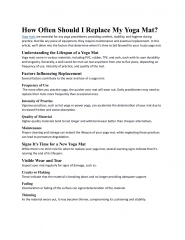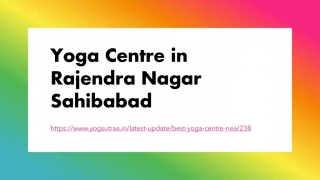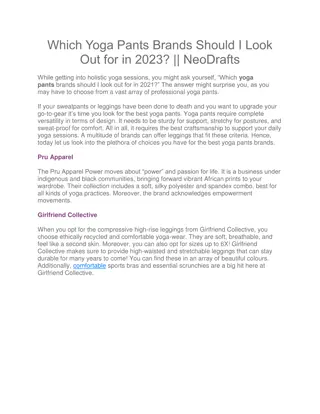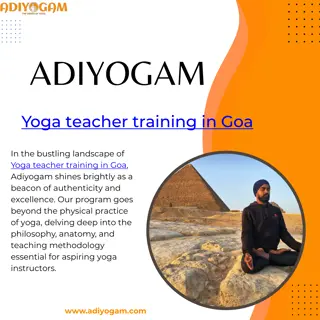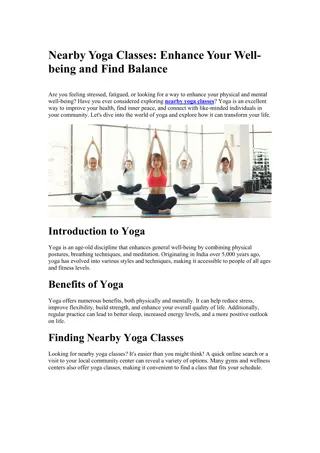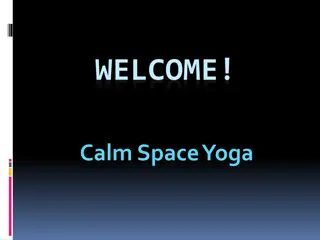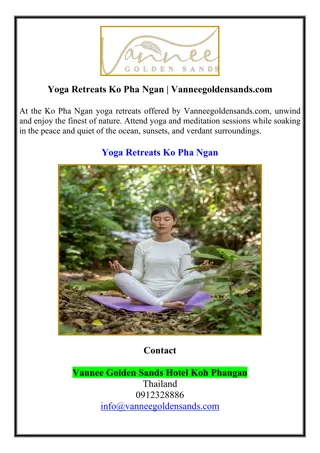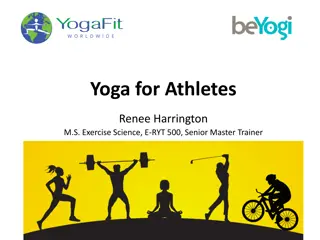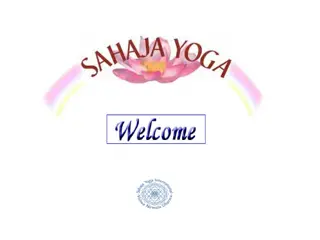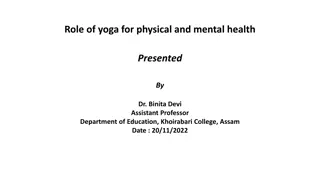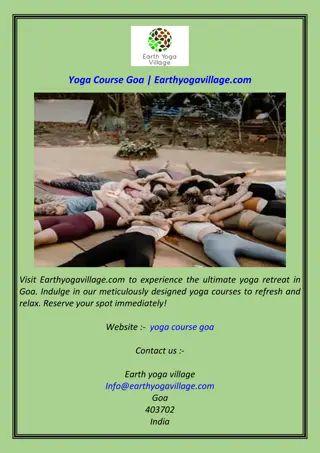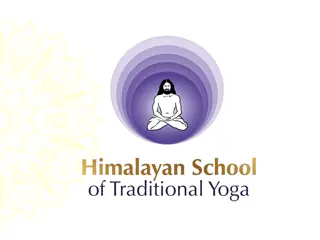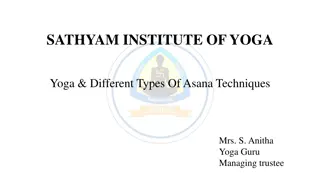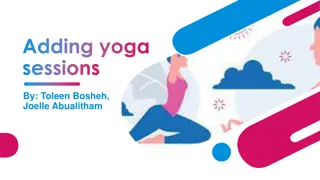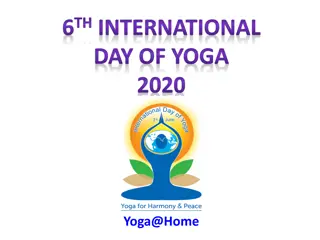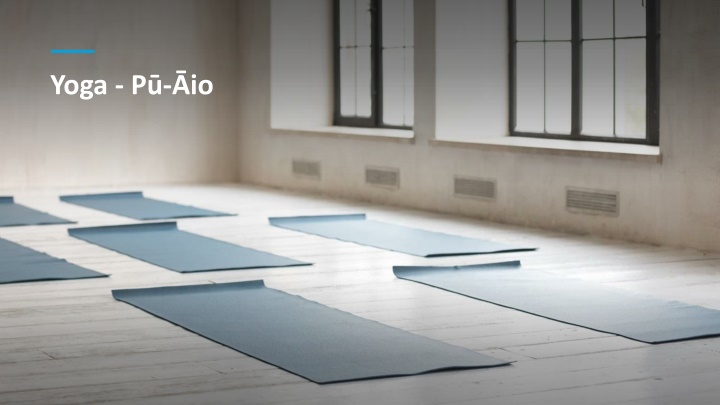
Exploring the Benefits of Yoga for Children
Discover the positive impact of yoga on children's flexibility, strength, confidence, and more. Learn how yoga enhances focus, posture, and stress management through poses, breathing, and meditation.
Download Presentation

Please find below an Image/Link to download the presentation.
The content on the website is provided AS IS for your information and personal use only. It may not be sold, licensed, or shared on other websites without obtaining consent from the author. If you encounter any issues during the download, it is possible that the publisher has removed the file from their server.
You are allowed to download the files provided on this website for personal or commercial use, subject to the condition that they are used lawfully. All files are the property of their respective owners.
The content on the website is provided AS IS for your information and personal use only. It may not be sold, licensed, or shared on other websites without obtaining consent from the author.
E N D
Presentation Transcript
What is yoga? Yoga consists of poses or postures coordinated with breathing and meditation to focus and calm the mind. The benefits of yoga for children include increasing flexibility, strength, confidence, and concentration, as well as improving posture and the ability to handle stress. Breathing plays a vital role in yoga as the child moves into and through poses while thinking about controlling the inhale and exhale of the breath. Yoga emphasises the individual rather than competition, making it appropriate for all children, including those with physical and intellectual limitations. Teaching yoga with compassion, non-judgment and without competition is essential for the integrity of the activity. Children who are used to competitions and sports must be reminded not to compare themselves to their classmates.
On ourselves and our tinana, wairua, hinengaro Self-management and respectful behaviour Learning Focus To create body awareness and experience a range of movements Connect to Ranginui and Papat nuku grounding movements with controlled breathing. Recognise human relationships with the environment te taiao.
Setting up a Yoga class Setting - When teaching yoga, create a unique 'quiet space' even in a regular classroom. Inside or outside, it may be helpful to place markers for konga (students) to have a designated spot to stand, sit and lie on. Play soft music and turn the lights down. These components help relaxation and the concept of removing oneself from distractions. Length of class- no hard and fast rules. As a rough guideline: 5-6 yr old -15 minutes; 7 to 9 yr old - 25 minutes; 10+ - 30-40 minutes Length of Poses- <6 years of age 20-60 seconds; >6 60-90 seconds
Children are guided through a sequence of poses. The Mountain pose is a good start as it helps the child feel grounded before moving slowly into the next pose. The teacher may demonstrate each pose or the children could look at pictures of the poses. Each pose is held for a short duration of time. During this phase, the children inhale and exhale their breath. The breath should not be forced or held. The strength of yoga is in learning breath control to manage the pose and focus concentration. One to two deep breaths follow each pose as the child returns to the Mountain pose. The children hold a pose to the count of 10, but an individual's body response is the guide. Children should not force a position that is painful. The Yoga lesson in PE
1. Setting the scene
Breathing activity to begin the class Hei t mata Begin H kina, h puta Hold your breath, 1, 2, 3, 4, 5 breathe out Hold your breath, 1,2,3,4, 5 breathe out Extend your hands to Ranginui, breathe in Hands down to Papat nuku, breathe out And give thanks Thank you Thank your body, your soul, your mind. T hei mauri ora! H kina, h puta Puritia t h , 1,2,3,4,5 mata H kina, h puta Puritia t h , 1,2,3,4,5 Toro ng ringa ki a ranginui Heke ng ringa ki a Papat nuku T n kourua Mihi ki t tinana, ki t wairua, ki t Hinengaro T hei mauri ora!
2. Warmup activities
Poses are varied exercises that can be done by standing, sitting, lying, and kneeling. Poses for children usually represent animals or natural objects - a pigeon, lion, mountain or tree. The poses can have meanings - the mountain pose emphasises feeling strong and steady. The tree encourages balance. Introduce 3 - 4 poses and gradually add more as the lessons and learning progresses. The poses may be in any order, but there needs to be a concentration on balance. For example, if the child bends forward, the next posture should involve bending backwards. 3. Yoga Poses
koaka honu Ko nga ahua kararehe mo te yoga i te reo Maori Yoga poses Yoga poses T koaka T kur T honu T ngeru Turanga ika T kaaka T peacock T kau Turanga nakahi T ekara Te ahua o te kopiona Turanga kamera Noho poraka Turanga kukupa
The relaxation or meditation period occurs after the poses have been completed. The children may take a position such as lying on their back with their eyes closed and focus on breathing, listening to a sound, or a repeated a phrase led by the teacher. The teacher may also use guided visualisation, such as imagining lying on a cloud and floating through the sky, to help the children relax. 4. Relaxation The relaxation time will be less than three minutes for children between 3 and 6 years. As children get older, this period will increase, depending on the individual child. After the relaxation period, there is a slow reawakening to regular activity by stretching or wiggling fingers and toes. If the children are lying down, rolling over to one side before slowly rising will reduce the chance of feeling dizzy.
Safety guidelines for Yoga practice
References / Online resources https://www.actionforhealthykids.org/activity/yoga-and-mindfulness/ https://lottesalling.dk/onewebmedia/Listen%20to%20the%20Lion%20-%20Yoga%20for%20kids.pdf Fady, Tayla., (2024). P - io: Yoga. Assignment 2 EDCURRM 111 HAUORA. White, L., (2009). Yoga for children. Continuing Nursing Education Series 35(5), 277-295


